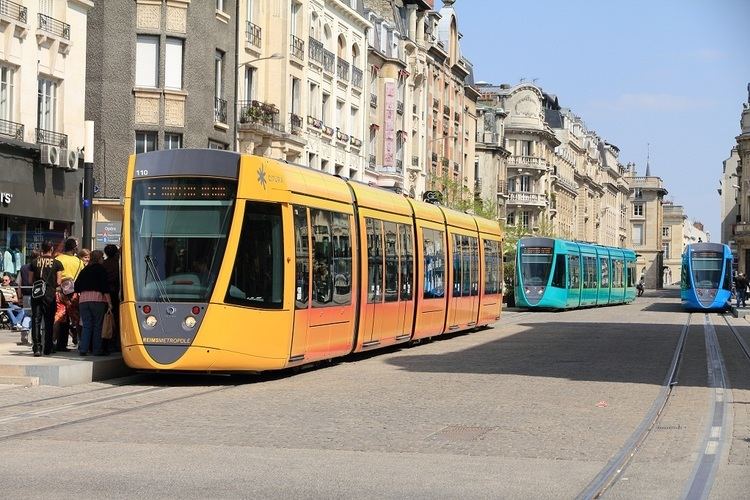Number of lines 2 Began operation 18 April 2011 | Number of stations 23 | |
 | ||
Locale Reims, Champagne-Ardenne, France | ||
Reims tramway (French: Tramway de Reims) is a tram system in the French city of Reims in Champagne-Ardenne opened in April 2011. It travels through the town from North to South, along 11 kilometres (6.8 mi) of route. The project is set to cost €342,780,000 - i.e. $504,120,000 or £255,360,000.
Contents
Routes
The route has 23 stops, with a further 2 planned for the future.
Two types of services will run on it :
Unlike the A A regular service, with a frequency varying from 4 to 10 minutes, the incoming of B services from the TGV station will be synchronized with the stops of high speed trains.
Operation
The project for the tramway is very special because the organizing authority has delegated the management of the project to a private concessionary consortium, called MARS (Mobility in the Agglomeration of ReimS) which is unique in France. This consortium is composed of the vehicles' builder Alstom, the network operator Transdev, five roadwork enterprises and three pension funds.
It is planned that the tramway will transport around 45,000 people a day.
Rolling stock
The 18 tram rakes are Alstom Citadis, type 302. They consist of 5 body sections and have capacity for 205 passengers, including 56 sitting. They are compatible with the APS third rail system pioneered by Bordeaux. They are powered by a third rail on the ground where the overhead power lines are undesirable for reasons relating to the city's traditional aesthetics.
The cabs have been specially designed for the project to remind one of a champagne glass. The livery is the work of famous designer Ruedi Baur and is based around the concept of colours. Each vehicle has its own pastel colour from a total selection of 8. The inside of the vehicles will be coloured the same way as the outside.
Previous tram project
There was a previous project in the mid-1980s. Everything was ready for the beginning of construction in 1991 but the project was suddenly interrupted. This contemporary project is very much like this former one as it takes back almost exactly the same route south of the central railway station.
Timeline
Future plans
There are several orientation projects and studies that may, in the future, define new network extensions. It is likely to be first an extension of the line, then there may be a second East-West line. The junctions for this one will be built in the first line project: construction of the future lines will not cause interruptions of traffic on the existing one.
